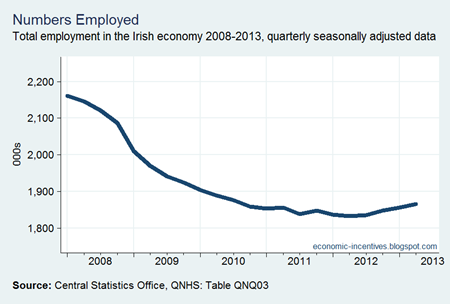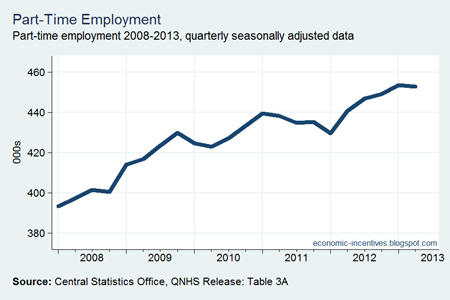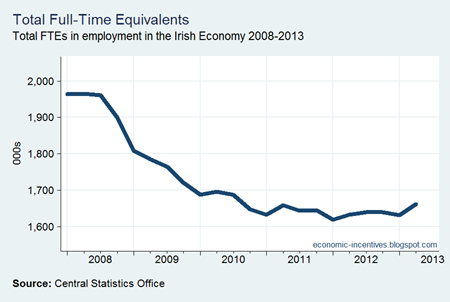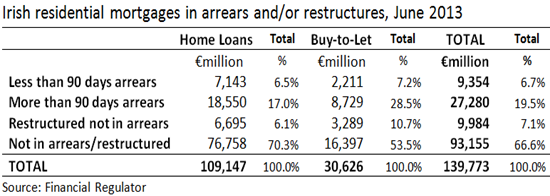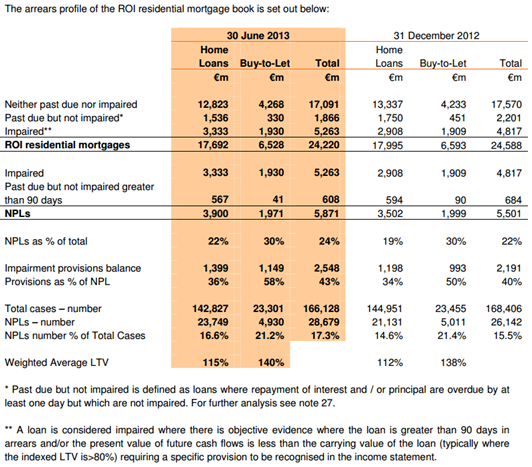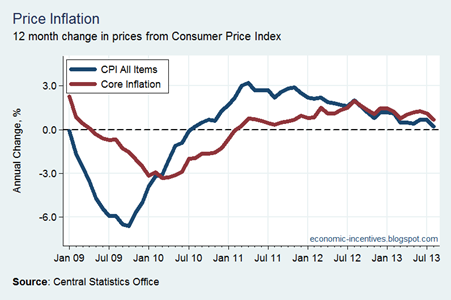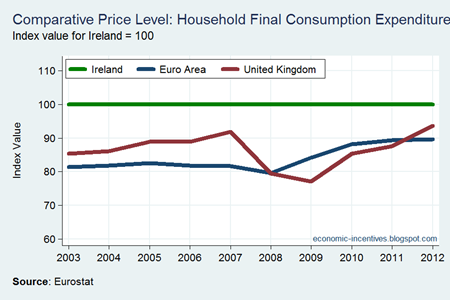For the past few years the escalating mortgage crisis has been analysed using aggregate figures for mortgage arrears published by the Financial Regulator’s Office in the Central Bank. The latest figures show that there are around 80,000 households in mortgage arrears of 90 days or more.
In virtually all cases we have no insight into the individual circumstances behind these figures but occasionally there is a specific case that catches media attention and provides a snapshot of the hidden details. One such instance arose this week with the efforts of the Cork County Sheriff, Sinead McNamara, to effect a repossession order granted by the High Court for a home in Kanturk.
From the details the borrowers have provided to journalists and various media outlets we can try to piece together the anatomy of a particular repossession case.
The borrowers bought the house in April 2007 and took out a mortgage with Permanent TSB for €150,000. They made payments on this loan and by 2009 the balance was reduced to €146,000.
In 2009, they remortgaged the house with Start Mortgages increasing the loan to €180,000 and used the extra €34,000 borrowed to pay business debts in the husband’s plumbing enterprise which had gotten into difficulty.
The borrowers have said that they made payments to Start Mortgages for 12-18 months but began to fall into arrears in 2010 and haven’t made any payment for "about two years”. Start Mortgages issued legal proceedings against the borrower in December 2010, and a repossession order was made in March 2013, almost two and a half years after proceedings were issued. The borrower did not attend court and the order was granted uncontested. The order was renewed on May 22nd last.
At some point the borrower made an offer to Start Mortgages to pay €150 a month "as a feeler" but no payments were made. A subsequent offer to repay €400 a month was made though it is not stated when this offer was made. Again no actual payments were made.
The county sheriff issued a formal repossession notice two weeks ago and attempted to carry out the court order on Wednesday afternoon but left because of the presence of a group of protestors.
If this is actually the reality of the situation then almost all of the evidence points to a repossession being the logical conclusion of this mortgage arrears case. The mortgage is unsustainable and should be ended.
The borrower had a loan with a prime mortgage provider in PTSB. They sought a remortgage to release equity from their home to pay some business debts. Presumably because of problems with their credit history they could not get the remortgage with PTSB or another prime lender.
They turned to sub-prime lender Start Mortgages for the remortgage but this would undoubtedly have meant a higher interest rate. If the interest rate on their existing borrowings went up by two percentage points that would have meant an increase in their interest bill of almost €3,000 for €146,000 they had already borrowed from PTSB but then remortgaged with Start Mortgages.
The purpose of the remortgage was to get an additional €34,000 to pay business debts but in order to get this money they had to accept a much higher interest rate on all their mortgage debt.
Assuming an interest rate of 6% on the loan from Start Mortgages the interest cost of the extra money borrowed would have been around €2,000 per year. This means the borrower signed up to pay an extra €5,000 a year in interest to borrow an extra €34,000, implying an effective interest rate on the additional borrowing of around 15%.
There was probably genuine intent when paying the business debts but the interest cost of doing was very large and the prolonged recession has undoubtedly hindered their ability to pay. However, it is difficult to make a case that the mortgage lender should be the one left carrying the loss of the collapse of the plumbing business.
Start Mortgages was formed by four Irish business people in 2004 and ultimately came to be 100% owned by the South African bank, Investec through an initial investment in Start by the UK sub-prime lender, Kensington Mortgages, a subsidiary of Investec.
As it is foreign-owned Start Mortgages has received no money from the Irish government as part of the bank bailout and, because it is no longer lending in the Irish market, it is not subject to the Mortgage Arrears Resolution Targets (MART) set this year by the Central Bank.
The clearly stated objective of recently-appointed Start Mortgages CEO, Alan Casey, is to maximise the current value of the loan book from the legacy of the boom where over half of all loans are delinquent. Start Mortgages is under no obligation to offer term extensions, split mortgages or reduced interest rates on its loans. Of all the lenders with mortgage arrears, Start Mortgages has been the most aggressive in seeking repossession orders, but is doing so within the law.
Start Mortgages signed a contract with the borrower and they are entitled to have the terms of the contract adhered to. In this case there is nothing to indicate that Start Mortgages have broken any terms of the loan agreement.
The borrowers agreed to the loan from Start Mortgages in 2009 but it only took until December 2010 for Start to be a position to issue court proceedings. Under the Code of Conduct on Mortgage Arrears that was in operation at the time lenders had to wait for 12 months after a loan fell into arrears before they could issue court proceedings. All borrowers who cooperated with their lenders were entitled to this 12-month stay.
A borrower was deemed non-cooperative if they failed to make a disclosure of their financial position or failed to provide financial information sought by the lender or failed to respond to communication from the lender during a three-month period when full payments were not made. The level of engagement from the borrower in order to be considered ‘cooperating’ was very low.
Given that Start Mortgages were able to issue legal proceedings in December 2010 it is clear that the borrowers were not cooperating unless they began to default on the loan almost as soon as it was drawn down.
As an aside it should be noted that this mortgage was not subject to the lacuna in the law that resulted from the ‘Dunne Judgement’. This ruling prevented repossession orders being issued against mortgages issued before 1st January 2009 if the proceedings had not been issued before that date. As the mortgage in question here was issued after 1st January 2009 it was not subject to this ruling.
There is little to suggest that the cooperation from the borrower improved after court proceedings were issued. The borrower made an offer to repay €150 a month which wouldn’t even come near to covering the interest on a debt of €180,000, but has acknowledged that this offer was made “as a feeler”.
At an interest rate of 6%, the annual interest bill on an loan of €180,000 would be €10,800 a year or €900 a month. With a payment of €150 a month the loan balance would increase each year by €8,000. To actually repay the mortgage over a 20-year term a monthly payment of around €1,300 is required.
It seems that no payment has been made on the mortgage for “about two years” and possibly since the repossession proceedings were issued in December 2010. An improved offer of €400 a month was made but absent any actual repayment the offer does not mean a whole lot.
But even a payment of €400 a month would not make this loan sustainable. If the interest rate was zero it would take nearly 40 years to repay €180,000 at €400 a month. Lenders to not give money with zero interest and particularly not sub-prime mortgage lenders.
No landlord would be expected to accept a payment that was a third of the agreed rent and such offers made by tenant are unlikely to get the support of protest groups. Tenants who fail to pay their rent have their tenancy agreement terminated.
The proposed €400 payment would be less than half the interest amount at a rate of 6%. Any credible offer has to get close to covering the interest and offer a possibility of the capital being repaid. If €400 was paid on a €180,000 loan at 6% each month the balance would go from €180,000 to €210,000 after four years.
The repayment offers made by the borrower in this case would not be considered credible by any lender and particularly not one that is as aggressive as Start Mortgages. The optimum solution in this instance is for Start Mortgages to take possession of the house and offset its value against the outstanding loan. If there is any shortfall, agreement should be reached to write this off in a short period of time.
If €400 per month is the most that the borrower can offer then there is no prospect of making a loan with a €900 monthly interest bill sustainable and it should be ended. A situation where somebody has spent three years in a house without paying anything and with little prospect of getting back on track cannot continue. The family will have to move to suitable accommodation that they can afford.
Repossession must be the last resort with any mortgage arrears case. In the majority of cases it will be possible to get borrowers on sustainable repayments through term extensions, split mortgages and interest-rate reductions that allow the loan to be repaid.
However, there will be a minority of cases where the numbers just don’t stack up. This is an example where that is clearly the case. If the term was set at 30 years and the interest put at 3.5%, a loan of €180,000 could be repaid with monthly repayments of €800. That is still twice what the borrowers have offered. With nothing paid for the past few years the accumulated interest has probably already pushed the outstanding amount close to €200,000 meaning an even larger payment would be required.
By thinking that a partial interest payment is credible the borrower is ignoring the reality that this will just see them smothered under an ever-growing mountain of debt. They need to get rid of the debt and make a fresh start. This will mean conceding possession of their home. This is a traumatic event and the use of a €110,000 deposit and the time of purchase makes the loss appear even greater.
Start Mortgages will also incur a loss from their lending as the repossessed property will only provide a partial repayment of the debt. They should not be allowed to pursue any shortfall indefinitely. They lent money to someone who can’t pay it back and have to accept the losses resulting from that.
How many of the arrears households are in the same situation as this? It is impossible to know. It is definitely in the thousands. Many will be with lenders who are not as aggressive as Start Mortgages who have a myopic perspective of trying to disengage from Ireland. Start Mortgages are willing to absorb the upfront cost of repossession rather than adopt a wait and see strategy.
Other lenders will take a more long-term perspective and will be more amenable to split mortgages and interest-rate reductions. But these are not useful options in cases such as this where the borrower can only afford a monthly payment that is less than half of the monthly interest.
When the repayment potential is low and there is little prospect of an improvement the mortgage should be ended with all sides accepting a share of the costs that such an outcome entails. The costs of allowing an unsustainable mortgage to continue will be even greater.



